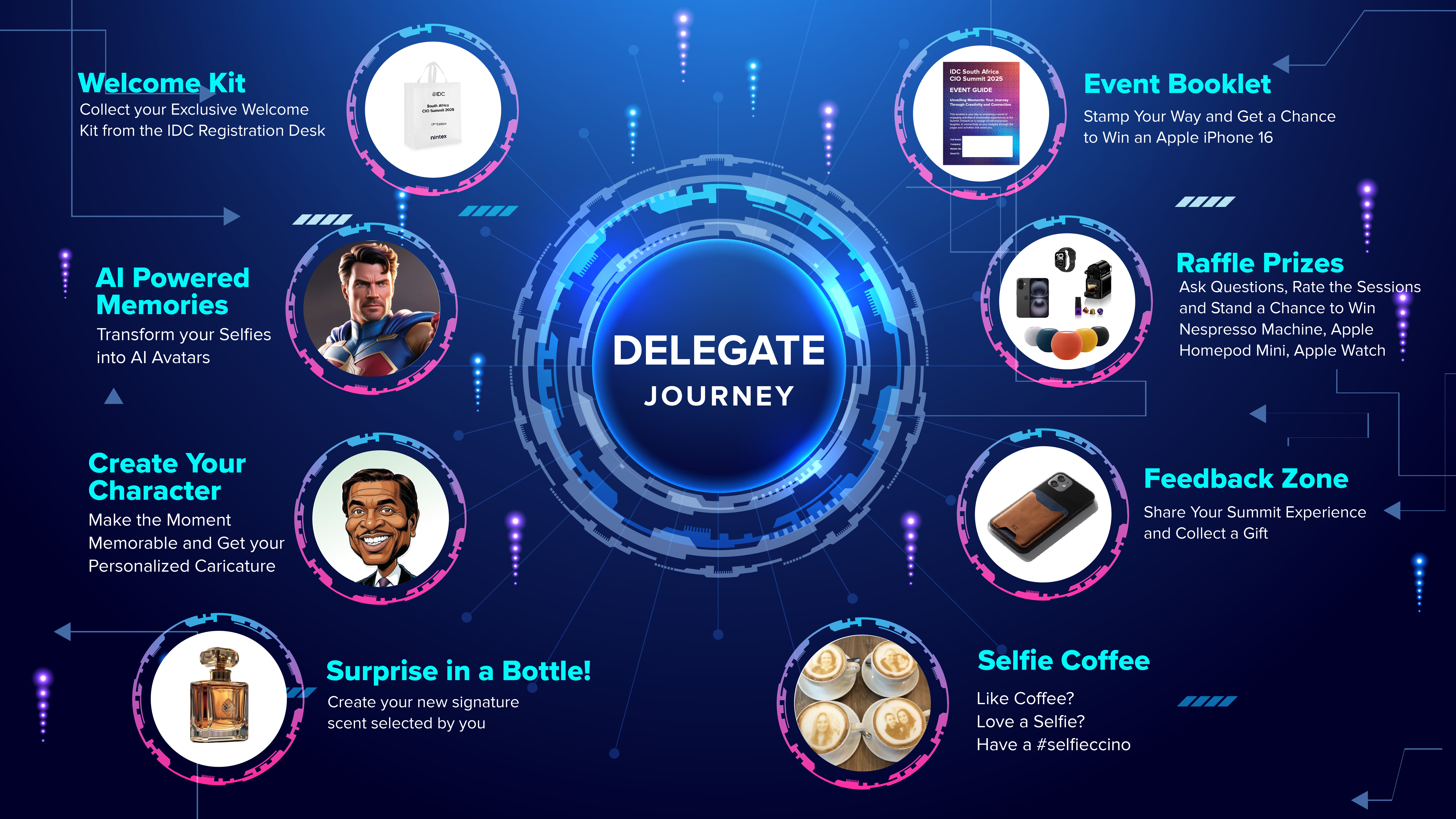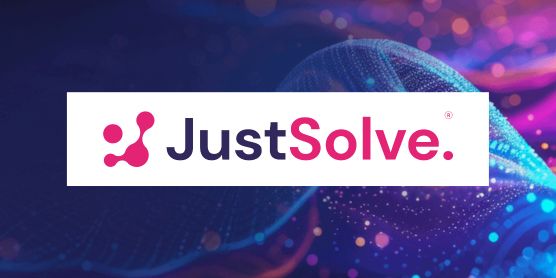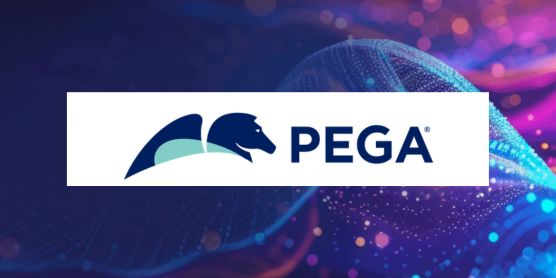Why Attend
Global influencers shared powerful stories of how they confronted challenges – and learned from them

Key Topics
Global influencers shared powerful stories of how they confronted challenges – and learned from them
Knowledge Hub

Partner Spotlight Top Digital Transformation Challenges CIOs Must Solve in 2025
As digital transformation (DX) becomes a business imperative, CIOs are under pressure to lead change while balancing cost, risk, and impact. Here are six top challenges modern enterprises should be addressing in 2025:
1. Insufficient Budget
Balancing innovation with cost effectiveness is a significant challenge. CIOs can mitigate project delays by strategically allocating resources, such as adopting a balanced approach between in-house and outsourced teams. CIOs can further mitigate the high cost of software delivery by adopting platforms that accelerate delivery and reduce the total cost of ownership.
2. Digital Talent Skills Gap
The shortage of skilled digital talent continues to hamper transformation efforts. Forward-thinking CIOs are investing in upskilling, robust training programs, and retention strategies. Leveraging AI and low-code platforms can also empower existing teams to deliver at scale without requiring niche technical skills.
3. Lack of a Clear DX Strategy
A digital road map, underpinned by the overall business and IT strategy, is non-negotiable. Without it, prioritization becomes guesswork. CIOs must define measurable objectives and KPIs that align with enterprise goals. A clear strategy ensures alignment, accountability, and momentum across the organization.
4. AI, Data, and Evolving Regulatory Standards
CIO must stay ahead by implementing AI policies, governance frameworks, and compliance technologies, and partnering with subject-matter experts to protect and secure the enterprise and its data. In 2024, CIOs experimented with GenAI tools, but data-driven organizations can use 2025 as a year to realign their data, analytics, and AI efforts to seek out more strategic benefits.
5. Changing Customer Expectations
Modern users expect seamless, hyper-personalized experiences. Enterprises that fail to meet these evolving expectations risk irrelevance and a lack of engagement. CIOs need to enable agile systems and feedback loops that allow the business to pivot quickly and deliver meaningful customer outcomes, investing in service and experience design.
6. Digitization, DX as a Journey, and AI Transformation
Remember that digitization is required before embarking on a DX journey, and we say journey because DX is not a one-off initiative; it’s a living, iterative process. CIOs should champion a culture of experimentation and continuous improvement — launching new products, refining services, and adapting to market shifts to stay competitive, including infusing AI with great user experiences, effectively embarking on the new frontier of DX, namely AI transformation.
Download the extended list of 16 DX challenges your strategy needs to address.
In 2025, CIOs will need to prioritize the digital transformation challenges most relevant to them, ensuring their organizations stay relevant, keep on innovating, and are built for and with the future in mind.
Need expert advice on overcoming these obstacles? Looking to accelerate the implementation of your IT strategy with confidence? Partner with JustSolve, South Africa’s #1 digital transformation partner.
Ready to lead the way?
Book a FREE consultation with JustSolve today.

Partner Spotlight Smart Conversations, Smarter Decisions: How AI Chatbots Are Changing the Game
Making Compliance Easier at Moniepoint
Moniepoint, Nigeria’s largest merchant acquirer, processes over $17 billion in transactions every month. Managing such scale requires a constant focus on compliance with rapidly changing regulations.
Moniepoint’s challenge was ensuring that employees could easily access up-to-date compliance information without overburdening the legal team or relying on manual searches.
Together with Google Cloud, we developed an AI chatbot tailored to this need. Employees can now query the chatbot for the latest compliance rules directly within their work chat. The system automatically updates with new documents and remembers prior conversations, making follow-up inquiries seamless.
The result? Less time wasted, fewer bottlenecks, and better alignment across teams.
What this Means for the Future
Our work with Moniepoint highlights a bigger shift: AI chatbots are moving beyond customer service to become essential tools for internal teams. They help employees work faster, make better decisions, and improve communication.
From supporting contact centers to aiding employees with complex queries, their potential is growing.
These smart tools thrive when built around human needs, driving true transformation when technology adapts to people, not the other way around.
Key Takeaways for CIOs
- AI chatbots are not just for customer service: They can support internal teams with real-time, reliable information.
- Fast deployment: AI-powered chatbots can be up and running in weeks, not months.
- Data integration is crucial: For maximum effectiveness, chatbots need to be connected to live business data, ensuring they provide accurate, current answers.
- Context matters: Retaining prior interactions enables more natural, human-like conversations, reducing frustration.
- Scalability without added headcount: AI chatbots can handle increasing queries without additional staff.
- Versatility: AI chatbots can be deployed across various platforms, such as web apps, mobile, and workplace tools like Google Chat, ensuring they meet employees where they already work.

Partner Spotlight Predictive Modeling in Real Time: AI’s Strategic Role in ITFM
In 2025, IT financial management (ITFM) will undergo a defining transformation — evolving from retrospective cost reporting to predictive, real-time decision-making. At the heart of this evolution lies artificial intelligence. As IT leaders contend with growing complexity across hybrid and multicloud environments, the need for speed, foresight, and precision in financial planning has never been greater.
Traditional financial models struggle to keep pace with dynamic IT consumption patterns. Expenses shift daily. Cloud pricing fluctuates. Business priorities evolve. In this climate, static reports are outdated the moment they’re generated. That’s where AI-powered predictive modeling becomes a game changer.
By analyzing historical spend, real-time usage and evolving consumption patterns, AI models can forecast future IT costs with unprecedented accuracy. Whether predicting spikes in cloud usage, anticipating budget overruns, or identifying optimization opportunities before they materialize, AI equips CFOs and CIOs with forward-looking clarity. This predictive capability enables organizations to transition from reactive cost control to proactive financial strategy.
But forecasting is only part of the equation. Real-time predictive modeling, powered by AI and modern data platforms, ensures insights are both immediate and actionable. Decision-makers no longer wait for end-of-month reports — they interrogate live data using natural language interfaces, instantly uncovering trends, anomalies, and savings potential. This agility empowers cross-functional teams to adjust course in the moment, align IT investments with business value, and avoid financial surprises.
Moreover, AI-driven modeling enhances the accuracy of cost allocation and chargeback, making it easier to link costs to actual usage and drive accountability across the enterprise. As organizations adopt granular, defensible models, they foster a culture of transparency and data-driven decision-making.
In short, predictive modeling isn’t just a financial forecasting tool — it’s a strategic enabler. As ITFM platforms integrate real-time AI insights at scale, the organizations that embrace them will move faster, allocate smarter, and lead with greater financial confidence.
The future of IT cost transparency isn’t just knowing what happened. It’s knowing what’s coming — and acting on it in real time.
Blake Davidson
MagicOrange
Chief Operating Officer

Partner Spotlight The Rise of AI Agents Signals the Growing Importance of Data Privacy
Data privacy is becoming increasingly complex and critical as organizations turn to AI to revamp their operations and processes. Among these advancements is agentic AI, designed to autonomously execute tasks without human intervention and act with agency.
For all its benefits, agentic AI’s reliance on vast amounts of personally identifiable data raises significant privacy concerns and fuels growing consumer mistrust in how organizations manage personal information. According to a recent Cloudera Agentic AI Survey, data privacy tops the concerns of respondents with 53% citing it as the main barrier. This has the potential to worsen when agentic AI hits the mainstream adoption phase in critical sectors like healthcare and financial services where personal data is prized at a premium.
Differentiating and Protecting Critical Information
The first and most crucial step in protecting consumer trust is securing critical and personally identifiable information. Organizations must invest in secure and governed data platforms that employ comprehensive encryption and tokenization strategies. These measures should be applied across all data environments, whether on-premises or cloud-based and across diverse storage solutions. Building robust defenses ensures that data remains secure while enabling the safe adoption of AI.
Addressing Data Governance and Security Mandates
As governments worldwide strengthen regulations to protect citizens’ data-privacy rights, ensuring compliance with local market rules and data sovereignty laws has become increasingly complex. The growing adoption of agentic AI adds another layer of difficulty, as these systems often require access to historical and cross-border data to operate effectively.
To address this, enterprises must adopt a granular approach to data governance, supported by a zero trust architecture — a security model that ensures no user or system is trusted by default. This involves accurately identifying where specific customer data resides, applying appropriate controls, and being prepared to produce detailed audit reports.
Building a culture of trust and transparency is essential for managing expectations around data usage and the ethical limitations of agentic AI. Implementing “privacy by design” principles ensures that privacy is integrated into AI products and services from the outset. As AI agents increasingly influence decision-making with consumer data, organizations must prioritize transparency in data handling to foster trust and reduce reputational risks, ultimately supporting long-term success.
Tariq Salameh
Cloudera
Solutions Engineering Manager, Emerging Markets

Analyst Spotlight The AI Everywhere Era in the Public Sector
AI and GenAI are having an increasingly pervasive impact on government — across missions, use cases, processes, and systems — in the Middle East and beyond. The disruptive impact of these technologies, compounded by geopolitical volatility, technical debt, digital sovereignty concerns, elevated citizen expectations, and regulatory changes, will require government leaders to approach innovation holistically. The acquisition and implementation of new technologies will not be enough. Realizing the benefits of AI, cloud, and industry platforms will require revisiting governance, risk management, culture, and the building of competencies to accelerate innovation.
Realizing the Value of AI at Scale in the MEA Region
The advent of GenAI prompted a surge of experimentation. Governments piloted GenAI for task automation, such as summarizing meeting minutes, drafting RFI and RFP documents for public tenders, creating job requisitions, synthesizing information to respond to freedom of information requests, and conducting research for the preparation of policy briefs. As pilot projects empowered them to evaluate benefits and risks, national governments and smart cities started to invest in scaling both traditional AI/ML and GenAI systems to address more complex industry-specific scenarios, such as service and benefits personalization, clinical care, and traffic safety. AI-enabled digital assistants started to help citizens interact with systems through conversational interfaces, instead of having to scroll through screens and fill out forms. Employee digital assistants started to help expert government case managers review, validate, and respond to citizen requests in a more holistic and personalized manner.
AI-powered governments will need to rethink their strategies, governance, people, and technologies to effectively adopt AI. This radical transformation will require governments to establish senior leadership roles that can build organizational capacities and competencies; design and enforce governance policies, structures, and processes; and deploy data and AI infrastructure, platforms, and application capabilities that align with strategic mission goals — all while complying with regulation. The MEA region is leading the charge; for instance, the Dubai government appointed 22 chief artificial intelligence officers (CAIOs) in 2024.
To achieve this level of automation, CAIOs need to work with line-of-mission and program leaders to re-engineer processes and systems so they can apply algorithms that recognize changes in their constituents’ circumstances, identify the root causes, and trigger operational workflows or dynamically reconfigure services and programs to meet constituents’ evolving needs and preferences.
From an architectural standpoint, this level of end-to-end process automation will require a combination of agents that will provide multimodal capabilities to process text, rules, and images, and will be orchestrated to deliver intended outcomes across end-to-end workflows.
To generate the desired outputs and outcomes from the application of AI and GenAI, government CAIOs and chief data officers need to feed data-hungry algorithmic training and fine-tuning. To avoid using low-quality datasets, which grow bias and hallucination, lower accuracy, and increase the risk of intellectual property infringement and other ethical and compliance risks, governments will invest in data logistics and control planes and establish governance polices and processes that enable them to control quality, reliability, and integrity of datasets.
Hybrid, multicloud environments are becoming the cornerstone for governments wanting to modernize their infrastructure, transform their applications, and take advantage of innovations such as AI and GenAI. FinOps practices and tools need to be in place to control costs, particularly as innovative capabilities are being tested and then scaled. AI will augment FinOps tools too, to optimize cloud resource sizing and usage, increase the transparency and accountability of cloud costs and carbon footprints, and detect anomalies.
Governments consider AI not only a tool for efficiency improvement, but a national strategic asset. They want to be able to harness AI to drive opportunities for the national AI innovation ecosystem and secure data and technical independence. This will drive new policy requirements for sovereign AI controls, such as data governance, data localization, and control requirements; scrutiny over hardware and software bills of material, algorithmic transparency, data protection, cybersecurity, and the ethical use of AI; and investments in local knowledge transfer. As a result of some of these policies, global cloud and AI platform companies have significantly increased their investments in local infrastructure and operations in the MEA region, with the Saudi Arabia and the UAE being the main beneficiaries.
As AI becomes more pervasive, robust security controls must be put in place, starting early on in the design stage for the hybrid, multicloud environments where these systems will be deployed. Security controls, along with updated governance policies and literacy programs, will be critical to ensure responsible AI innovation that minimizes the risk of misuse, such as generating misinformation, deepfakes, or biased content, as well as avoiding exposing systems to attacks and loss of sensitive and critical data.
Government CIOs and CAIOs that have a mandate to realize the benefits of AI at scale will have to develop trustworthy collaborative approaches to identify early wins, establish responsible AI governance and cybersecurity best practices, embed sovereignty principles in platform procurement and implementation, and apply FinOps best practices and tools to control the cost of innovation.
Massimiliano Claps
IDC
Research Director

Partner Spotlight Unleashing Efficiency: The Synergistic Relationship Between AI and Low-Code Process Automation
Expanding the use of AI in automating processes, tasks, and workflows is a critical operational priority for organizations. However, before organizations can fully leverage AI, low-code automation technologies are needed to provide the necessary processes, data quality, consistency, and scalability for AI to succeed.
AI is an accelerator and optimizer of well-defined processes. Automation allows organizations to identify where inefficiencies are and automate them so that AI can maximize the efficiency of the process.
AI requires structured and clean datasets to perform at its best. Process automation captures, organizes, and standardizes data from across an organization, which creates a clear path for AI to deliver actionable insights based on data.
Lastly, low-code process automation enables business users – not only IT users – to create workflows. The easy-to-use nature of low-code automation allows organizations to more easily establish efficient, automated processes in their pursuit of AI adoption. The beauty of process automation is that it can be applied across nearly every process within an organization – from back-office to front-office use cases. For example, an organization can leverage process automation to streamline how they handle purchase orders and invoicing, as well as how they manage and triage customer issues. So, regardless of where an organization wants to implement AI, process automation can help streamline and automate processes for the greatest impact.
Process automation can help streamline and shorten the steps needed to get there. By optimizing processes, connecting datasets, and creating scalable user experiences, process automation will enable organizations to quickly see the benefits of AI.
Ayman El-Hattab
Nintex
Regional Vice President, Emerging Markets

Partner Spotlight The Future of AI-Powered Automation: Beyond Efficiency to Transformation
Augmented Intelligence: The Human-Machine Partnership
The future of automation isn’t about replacing humans but augmenting their capabilities. This “augmented intelligence” paradigm represents a collaborative relationship where AI handles routine, data-intensive tasks while humans focus on creative problem-solving, strategic thinking, and emotional intelligence. This symbiotic partnership will unlock unprecedented levels of productivity and innovation across industries.br>
Beyond Rule-Based Systems to Adaptive Intelligence
Next-generation AI automation will transcend today’s rule-based systems. Machine learning algorithms will continuously self-optimize, adapting to changing conditions without explicit programming. These systems will anticipate needs rather than simply respond to them, creating proactive rather than reactive business processes.
Generative AI: Adding Creativity to Automation
Generative AI represents perhaps the most transformative development in automation’s future. By creating original content, designs, and solutions, generative AI adds a layer of creativity previously thought impossible for machines. This capability will enable automation to extend beyond structured, repetitive tasks into domains requiring imagination and originality.
Ethical AI and Responsible Automation
As AI automation becomes more powerful, ethical considerations will move from peripheral concerns to central design principles. Successful organizations will prioritize transparency, fairness, and accountability in their automated systems. This focus on responsible AI will build trust with customers and employees while mitigating regulatory risks.
Seamless Integration Across Ecosystems
Future AI automation will seamlessly integrate across previously siloed systems, creating cohesive digital ecosystems. This integration will enable end-to-end process optimization that spans organizational boundaries, creating more resilient and adaptive business networks.
The Human Element Remains Critical
Despite technological advances, the human element remains irreplaceable. The organizations that thrive will be those that thoughtfully redesign work to emphasize uniquely human strengths while leveraging AI for augmentation rather than replacement. This balanced approach will create more meaningful work while delivering superior outcomes.
The future of AI-powered automation isn’t just about doing things faster or cheaper — it’s about fundamentally reimagining what’s possible. Organizations that embrace this vision will not merely optimize existing processes but create entirely new paradigms for value creation in the digital age.
Stay tuned for exciting news!
Lorem ipsum dolor sit amet consectetur. Dui egestas in senectus suspendisse enim.Lorem ipsum dolor sit amet consectetur.